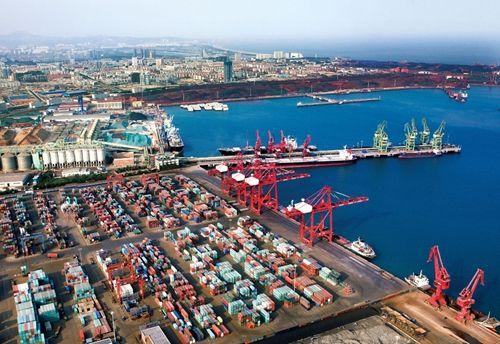Abstract: The Global Times on Sunday published an article Supply chains become next competitive advantage written by Toumert AI, director of Education, International Bachelor Program at the International School under China Foreign Affairs University. The author stated that as trade conflicts are rising between major players, and as the EU, US and China have reached equal footing when it comes to knowledge, capacity production and innovation, the supply chain is becoming the next competitive advantage the three economies will focus on to shape the future of global trade.
One of the aspects of the Belt and Road (B&R) Initiative that many economists fail to note is the supply chain infrastructure China is offering countries and regions along the route. The B&R is not only about building bridges and airports but linking these economies in a way that offers fully integrated hubs, warehouses, ports, airports, rail and roads on the path from Beijing to the rest of the world.
The full text of the article is as follows:
Western countries have been excited, though hesitant, to embrace a new drive from China with an Asian perspective on the global economy and integrated communities into one shared destiny.
While the hype has so far focused on AI, robotics, green energy and entrepreneurship, one major aspect of the future of China's economic drive is the supply chain. Indeed, as the world economy becomes more integrated at the regional and global level, manufacturing remains fractured among countries, regions and local communities.
As trade conflicts are rising between major players, and as the EU, US and China have reached equal footing when it comes to knowledge, capacity production and innovation, the supply chain is becoming the next competitive advantage the three economies will focus on to shape the future of global trade.
China's emergence as the manufacturing center of the world has been impressive. China not only overtook the US in 2011 to become the world's top producer of manufactured goods, but has also employed its manufacturing industry to lift living standards.
Now Chinese consumers are buying everything from electronics and hardware to clothing and groceries from both local and international producers through well-established logistics platforms that deliver these goods smoothly.
And not only do these logistics platforms serve Chinese consumers, but their reach is global. Customers on their laptops in the US, Australia or Kenya are connected to an amazing network built by China, which connects international producers with international consumers.
In human history, no other country has succeeded in the way China has, bringing the power of choice to consumers' fingertips and delivering real economic benefits for small companies worldwide.
To be able to achieve this level of dominance, China has moved its supply chain industries from the traditional model of being manufacturers to being the market place.
Through e-commerce giants such as Alibaba and JD.com, China has excelled in bringing efficiency to the warehousing and distribution system with automated centers, and it has proven effective in pushing third-party logistics providers to integrate last-mile delivery, fulfillment and warehousing. SF Express and Best Logistics are examples of third party logistics providers that have aggressively developed integrated networks competing with online retailers.
While China has been successful in transforming an archaic supply chain into a smart, green, efficient one, policymakers understand very well that the future resides in creating an international extension of successful operations in the Chinese mainland.
One of the aspects of the Belt and Road (B&R) initiative that many economists fail to note is the supply chain infrastructure China is offering countries and regions along the route.
The B&R is not only about building bridges and airports - which, by the way, are essential for any future development - but linking these economies in a way that offers fully integrated hubs, warehouses, ports, airports, rail and roads on the path from Beijing to the rest of the world.
This integration does not only focus on the economic players that already monopolize the supply chain and global business, but rather it is, by default, a local vision.
The focus is on real traders and real trade, which generate employment and social progress.
A small shop owner on the China-Pakistan Economic Corridor (CPEC) can log in to an Alibaba account, display his merchandise, take orders, ship them via newly built highways, ports or rail connections, and eventually deliver the products to his European customer.
China's supply chains are expanding locally and internationally and adapting to global economic realities as they arise, but challenges exist. While these challenges do not threaten the growth of the sector, they could limit its expansion and, by extension, other industries.
To be competitive, Chinese companies have to look upstream. The rising cost of production has pushed many Chinese manufacturers to move their operations to neighboring countries to stay competitive and save on costs. Consumers are increasingly complex and sophisticated and quality products, excellent services, timely delivery, and transparency in transactions are becoming important for buyers.
This requires a full integration between all platforms, from manufacturing to delivery, not only at a local level to serve an ever-growing Chinese economy but also its expansion globally.




 A single purchase
A single purchase









